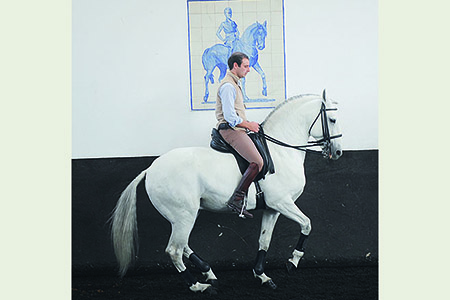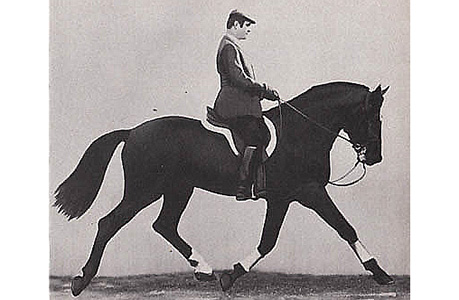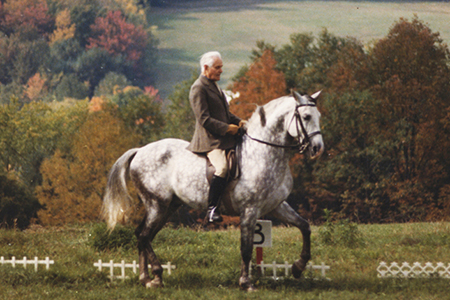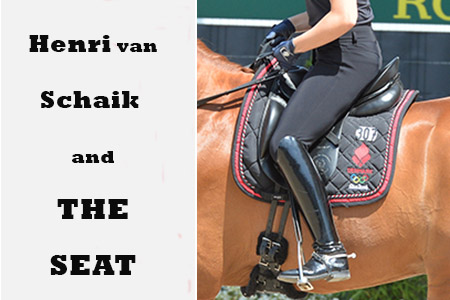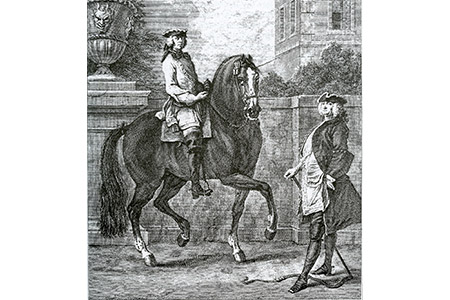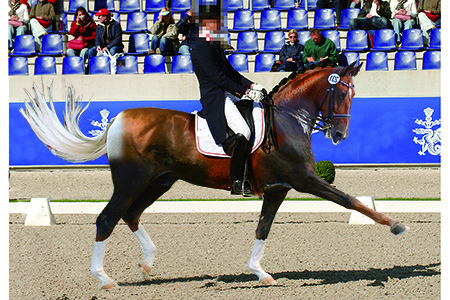Who's Who
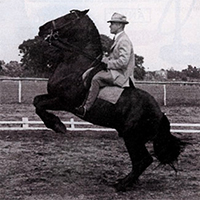
van Schaik, Dr Henri
Discipline : Dressage
Born : 1899
Died : 1991
Dr H.L.M. Van Schaik
1899-1991
Henri van Schaik was born in Holland and began his riding career as a showjumper, winning team silver at the Berlin Olympics on Santa Bell.
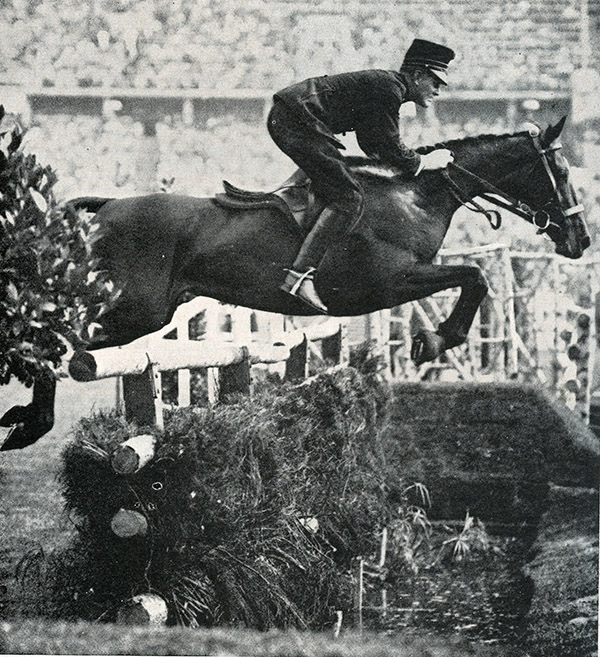
Henri van Schaik riding Santa Bell at the 1936 Games
He migrated to the United States after WW2, and opened a riding academy in Vermont. He was much in demand as a trainer and a judge, as respected as a rider who trained in the classical manner.
Throughout the 60’s, 70’s and 80’s, he was one of a number of riders who became concerned that the classical principles were increasingly under threat from the emerging style of competition dressage.
His book, Misconceptions and Simple Truths in Dressage began as a series of articles defending the classical way of training. Writing in Dressage & CT, after the World Dressage Championships in Canada, he was withering:
These last World Championships made it very clear that the judges totally neglect the artistic. This was also evident in the judging of the Kür. I am convinced this is the reason why classical equitation is practically dead. It was expressed very well by somebody sitting in my neighborhood: ‘The quality of the horses is getting better and better, but the level of riding is going consistently down.’
I saw only two horses who made the impression of doing of their own accord what was required of them. Their riders, although not very good ones, both had very soft hands. It all made an effortless impression, both riders and horses enjoying themselves. They were, of course, very low in ratings.
High in the ratings were riders with very active hands, interfering almost every stride. One of the riders during the Grand Prix Freestyle, used her hands as the conductor of an orchestra does. Every beat of the music brought her hands up.
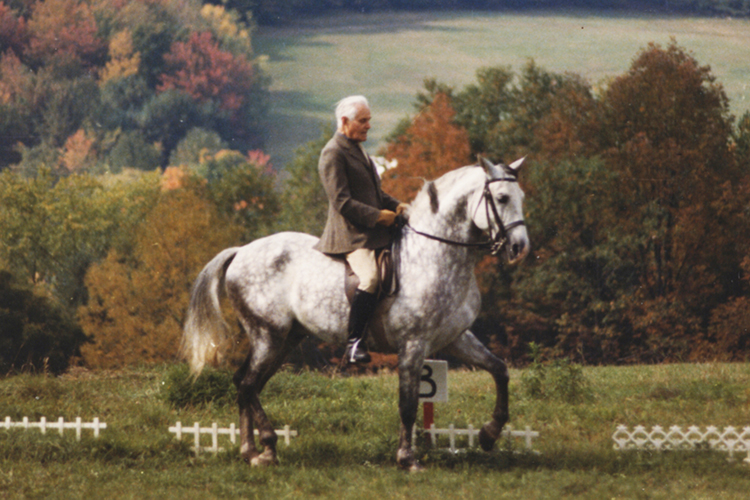
Some riders were very mobile with their bodies especially in the extended canter. I cannot understand why the judges do not do anything about it. This way of riding is a mockery of classical equitation and against the rules.
The reason that so many people have trouble with their hands is that they use the wrong muscles. The contact with the horse’s mouth should be elastic. This can only be achieved if the rider flexes the elbow, never riding with stretched elbows, and also if he does not use the arm muscles, with the exception of the triceps. The rider should be able to balance the hand, which he cannot do if he uses his biceps or lower arm muscles.
The rider should resist with his back muscles. Before the Second World War, people were taught to ride with their back, not only to create impulsion but also to resist. Nowadays, most people pull with their arms, often brace their hands and they try to create impulsion with their heels and spurs. Their legs are all over the place, most of the time.”
He migrated to the United States after WW2, and opened a riding academy in Vermont. He was much in demand as a trainer and a judge, as respected as a rider who trained in the classical manner.
Throughout the 60’s, 70’s and 80’s, he was one of a number of riders who became concerned that the classical principles were increasingly under threat from the emerging style of competition dressage.
His book, Misconceptions and Simple Truths in Dressage began as a series of articles defending the classical way of training. Writing in Dressage & CT, after the World Dressage Championships in Canada, he was withering:
These last World Championships made it very clear that the judges totally neglect the artistic. This was also evident in the judging of the Kür. I am convinced this is the reason why classical equitation is practically dead. It was expressed very well by somebody sitting in my neighborhood: ‘The quality of the horses is getting better and better, but the level of riding is going consistently down.’
I saw only two horses who made the impression of doing of their own accord what was required of them. Their riders, although not very good ones, both had very soft hands. It all made an effortless impression, both riders and horses enjoying themselves. They were, of course, very low in ratings.
High in the ratings were riders with very active hands, interfering almost every stride. One of the riders during the Grand Prix Freestyle, used her hands as the conductor of an orchestra does. Every beat of the music brought her hands up.
Some riders were very mobile with their bodies especially in the extended canter. I cannot understand why the judges do not do anything about it. This way of riding is a mockery of classical equitation and against the rules.
The reason that so many people have trouble with their hands is that they use the wrong muscles. The contact with the horse’s mouth should be elastic. This can only be achieved if the rider flexes the elbow, never riding with stretched elbows, and also if he does not use the arm muscles, with the exception of the triceps. The rider should be able to balance the hand, which he cannot do if he uses his biceps or lower arm muscles.
The rider should resist with his back muscles. Before the Second World War, people were taught to ride with their back, not only to create impulsion but also to resist. Nowadays, most people pull with their arms, often brace their hands and they try to create impulsion with their heels and spurs. Their legs are all over the place, most of the time.”
Publications:
Misconceptions and Simple Truths in Dressage (1986)


